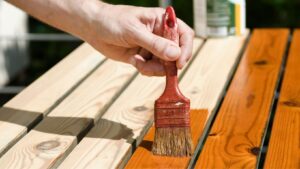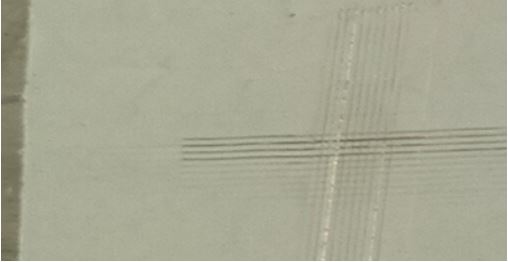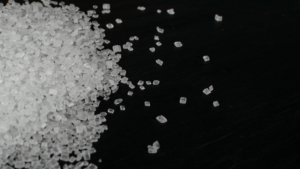
A cost-effective substitution for TPGDA and TMPTA
Discover cost-effective alternatives to TPGDA and TMPTA for UV coatings, offering savings of up to 18% while enhancing yellowing resistance and ensuring a safer working environment.
Silane is an inorganic compound with the chemical formula, SiH4. It is a colourless, pyrophoric, toxic gas with a sharp, repulsive smell, similar to acetic acid. Silane with alkyl groups is an effective water repellent for mineral surfaces such as concrete and masonry. Silanes with both organic and inorganic attachments are used as coupling agents. Organofunctional silane products range includes amino silane, epoxy silane, sulfur silane, acyl silane, vinyl silane, alkyl silane and phenyl silane etc.
The unique ability of silane to form covalent bonds in inorganic and organic components and the inherent stability of siloxane adhesion make this technology a core component for high-performance paints and coatings. These properties of silane play an essential role in the materials resisting physical, chemical, environmental and thermal degradation.

Silane monomers are widely used in coatings in the form of organofunctional alkoxysilanes, acting as adhesion promoters, pigment treatments and cross-linking agents. Inorganic alkyl functional groups combine with various organic functional groups to form covalent bonds between organic polymers and inorganic surfaces (such as dyes, fillers, glass and metal materials).
Through the same coupling agent mechanism as described above, the organic polymer is combined with the inorganic surface. The combination of all alkoxysilanes and the inorganic surface is essentially the same, but to obtain the most performance from the silane, the silane’s organic functional properties must match the chemical properties of organic polymers in paints, inks, or coatings. The use of silane in coatings can improve adhesion, moisture resistance, chemical resistance, UV resistance, and corrosion resistance, and can improve the dispersion of fillers.
Silane gives coating many advantages:

Water resistance
Adhesion
Better liquidity
Crosslinking to enhance thermal stability and durability
Dispersion of pigments
and fillers
UV resistance, water resistance, chemical resistance
EVOSOL™ SILANE 661 is a bifunctional silane with active amino groups and hydrolyzable inorganic ethoxysilyl groups. With the dual nature of its reaction, it can organically bond inorganic materials (such as glass, metals, and fillers) and organic polymers (such as thermoplastics, thermosetting plastics, or elastomers). It is used as a tackifier, organic/inorganic interface surface modifier (corrosion protection, primer) or silicone polymer or crosslinking agent (moisture crosslinking polymer). It is a colorless and transparent low-viscosity liquid with an obvious ammonia odor, soluble in alcohol, aliphatic or aromatic hydrocarbons. It can also be completely dissolved in water and immediately react with water.

EVOSOL™ SILANE 661 in the presence of water, ethoxy groups will be hydrolyzed to form reactive silanol groups, which can form a bond with the surface of various inorganic substrates. Suitable inorganic materials like glass, fiberglass, glass wool, mineral wool, silica, sand, mica, aluminum hydroxide, wollastonite, kaolin, talc, and other silicate fillers, metal oxides, and metals. The hydrolysis of EVOSOL™ SILANE 661 can be catalyzed by organic acids such as acetic acid. Resins that can be used with EVOSOL™ SILANE 661 include epoxy resin, phenolic resin, furan, melamine, polyurethane, PA, PBT, PC, EVA, modified PP, polyvinyl butyral, PAVC, PVC, PS, elastic rubber, acrylic resin, and silicone resin. EVOSOL™ SILANE 661 is a good adhesion promoter in acrylic paints, adhesives, and sealants.
To understand more about EVOSOL™ SILANE 661, please contact our team of professionals at sales@maha.asia
We Offer A Wide Range Of Ingredients For Surface Technology Formulations!

Discover cost-effective alternatives to TPGDA and TMPTA for UV coatings, offering savings of up to 18% while enhancing yellowing resistance and ensuring a safer working environment.

Discover Quava™ MHEC, a cost-effective waterborne coatings formulation.

Discover GEN TPA R2122, a water-based emulsion, corrosion-resistant alternative to solvent acrylic for direct-to-metal coatings. Contact us for more info!

DEGAROUTE®: Innovative cold plastic road markings for durability and safety. Contact Maha Asia for details.

TRIS AMINO Crystals is well-known provides high-efficiency formaldehyde scavenging functionality when used in indoor air filtration applications as well as in decorative paints and building and construction material

Orgasol® Fine Powder Essential for Overprint Varnishes (OPV), enhancing print durability, performance, and aesthetics
Copyright © 2023 Maha Chemicals (Asia) Pte Ltd